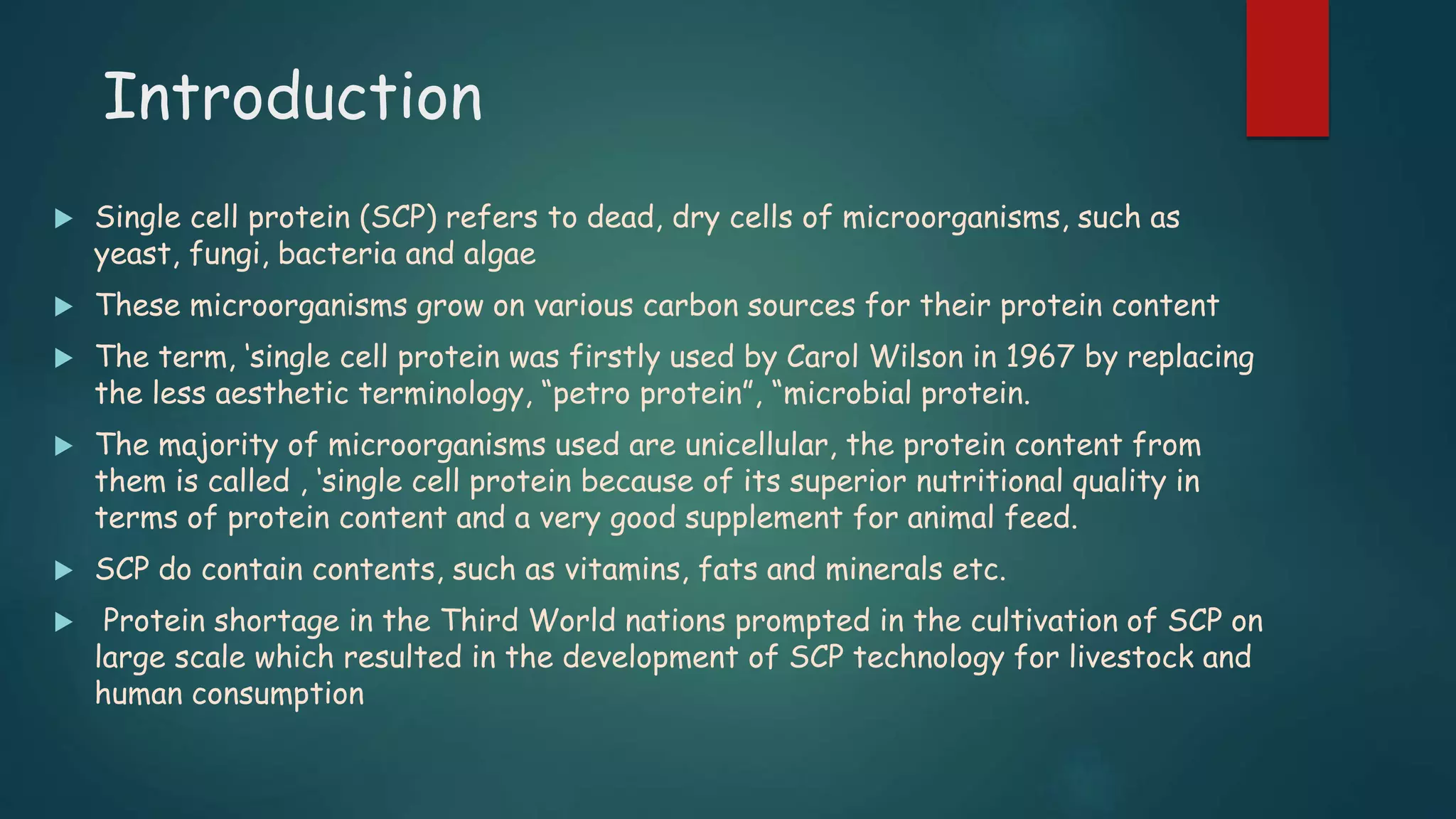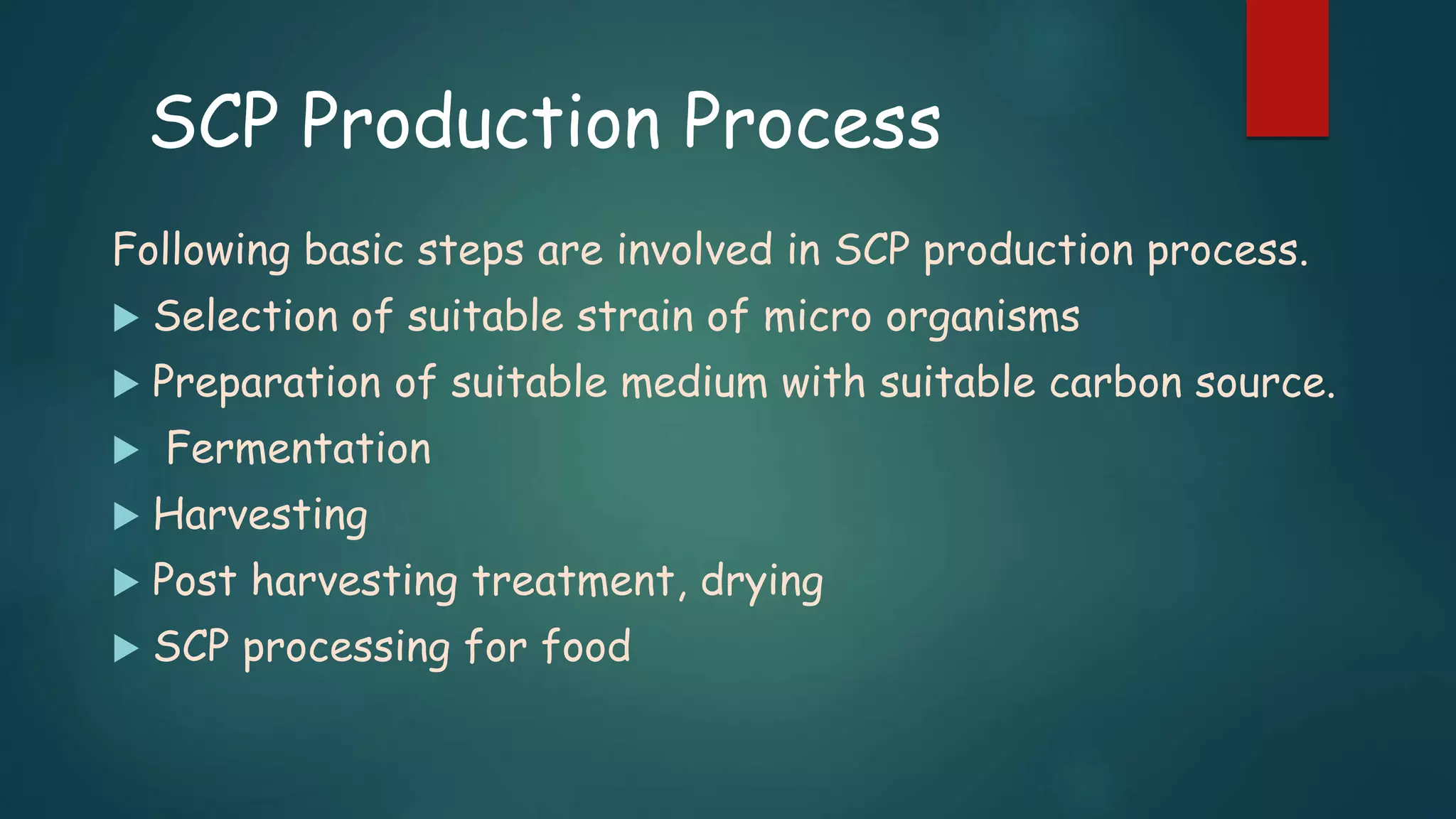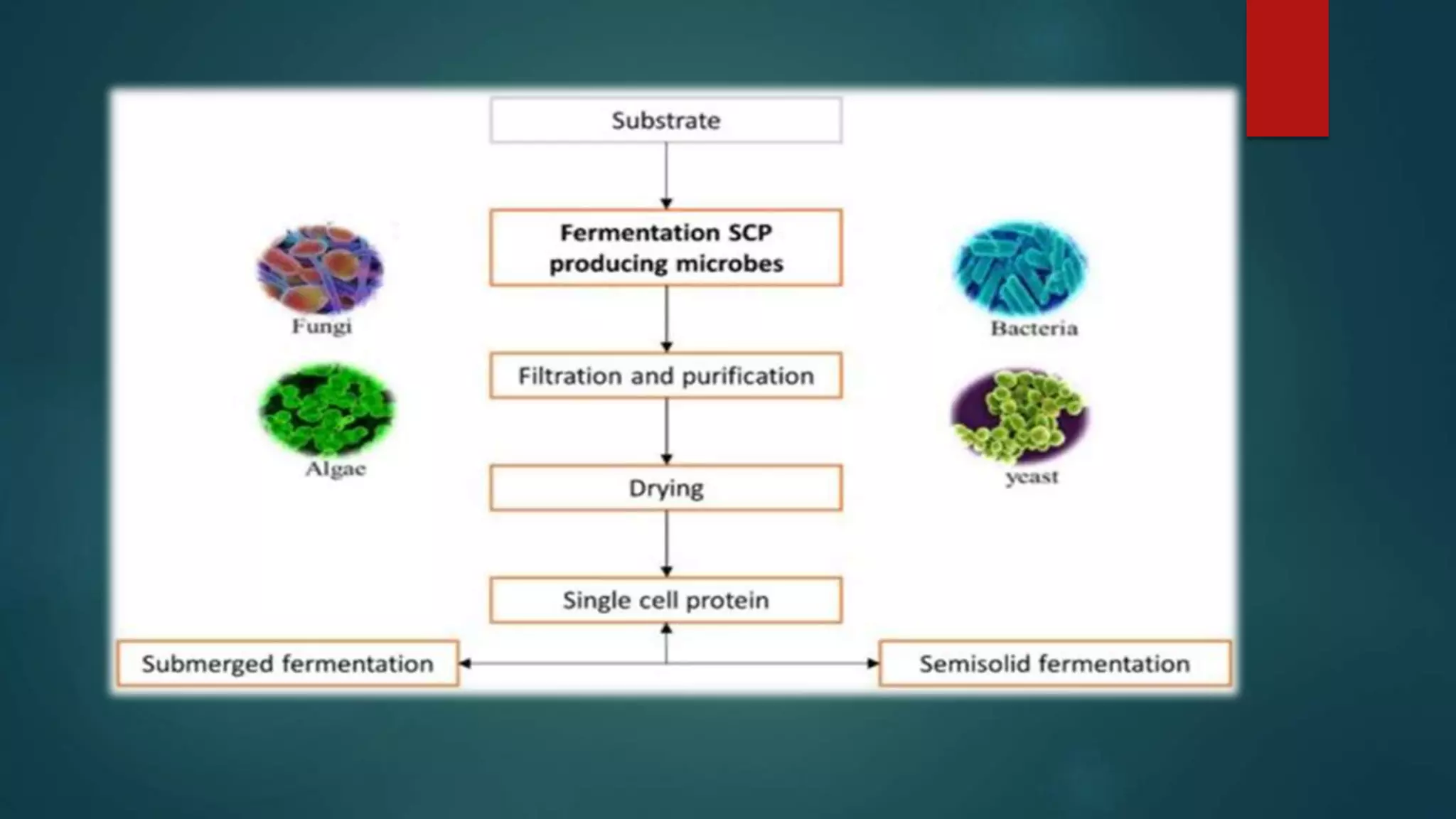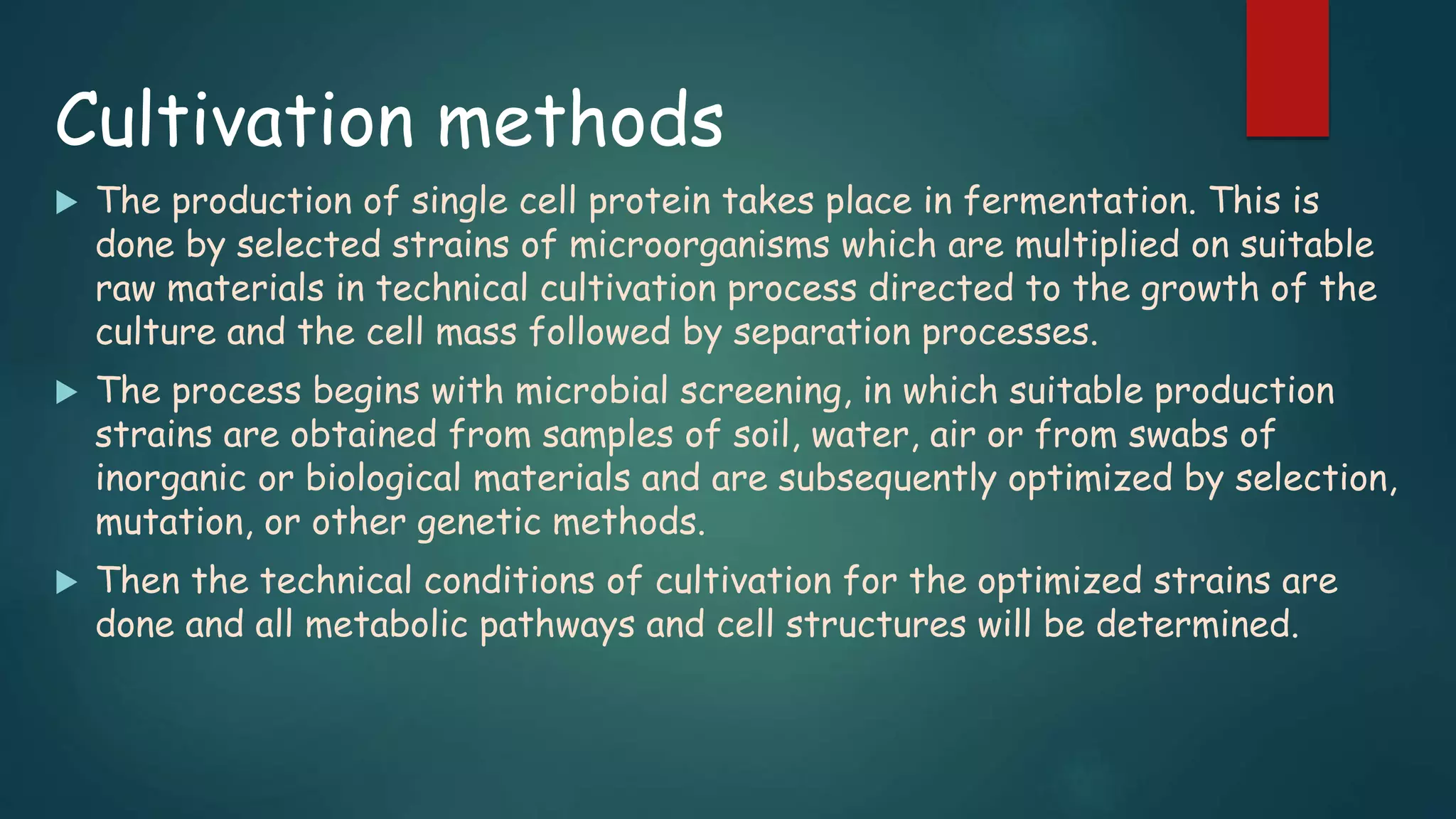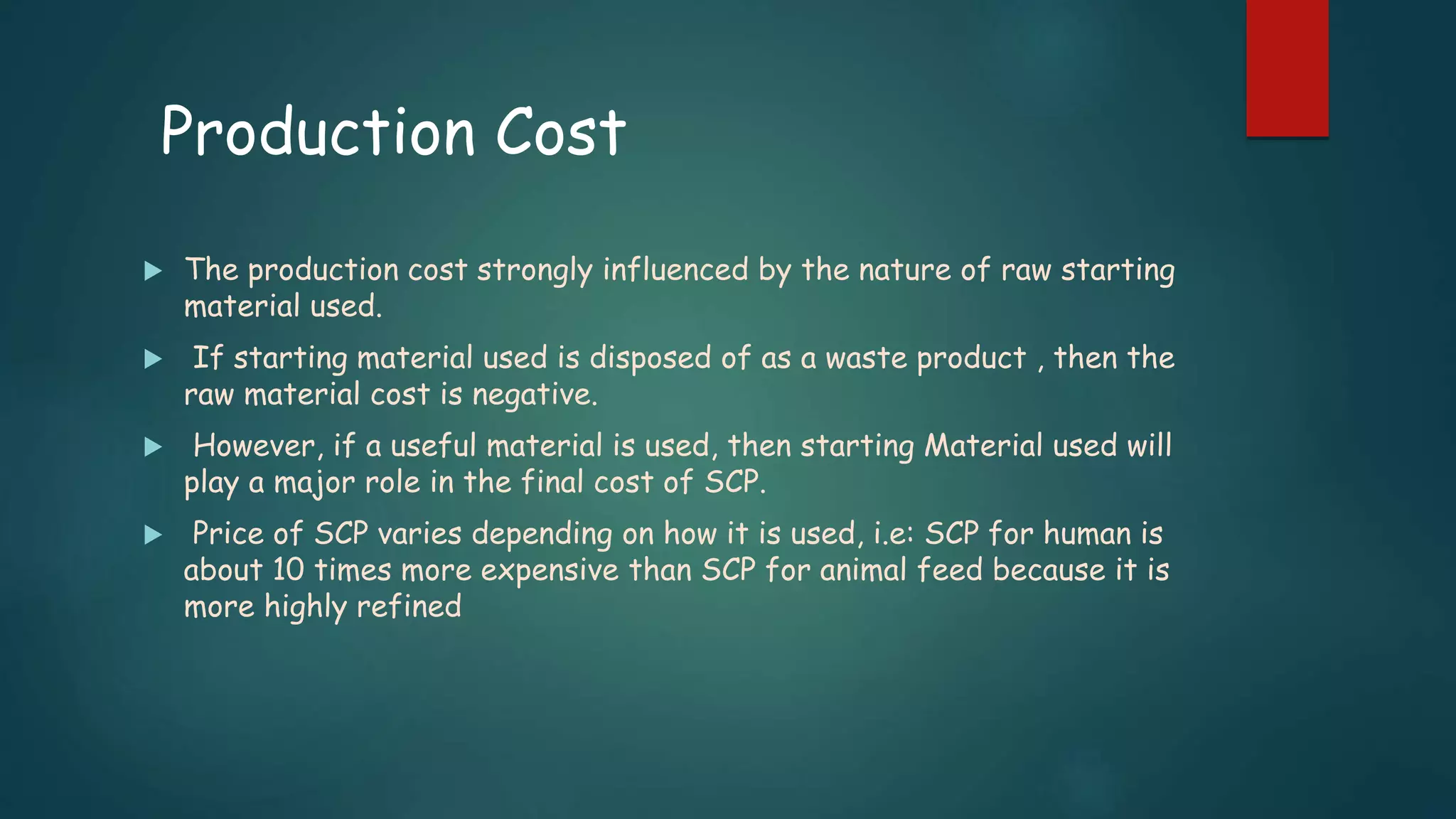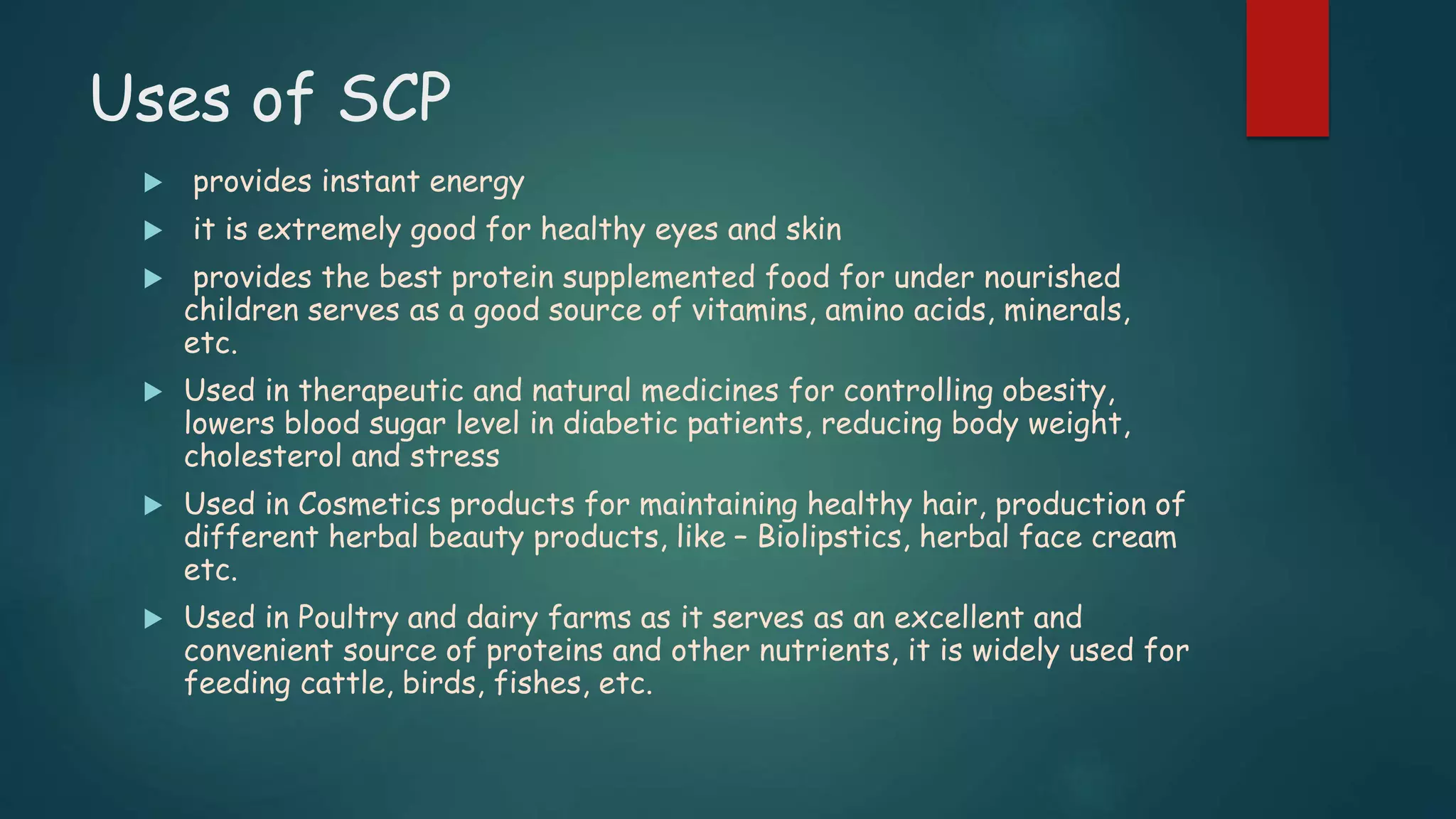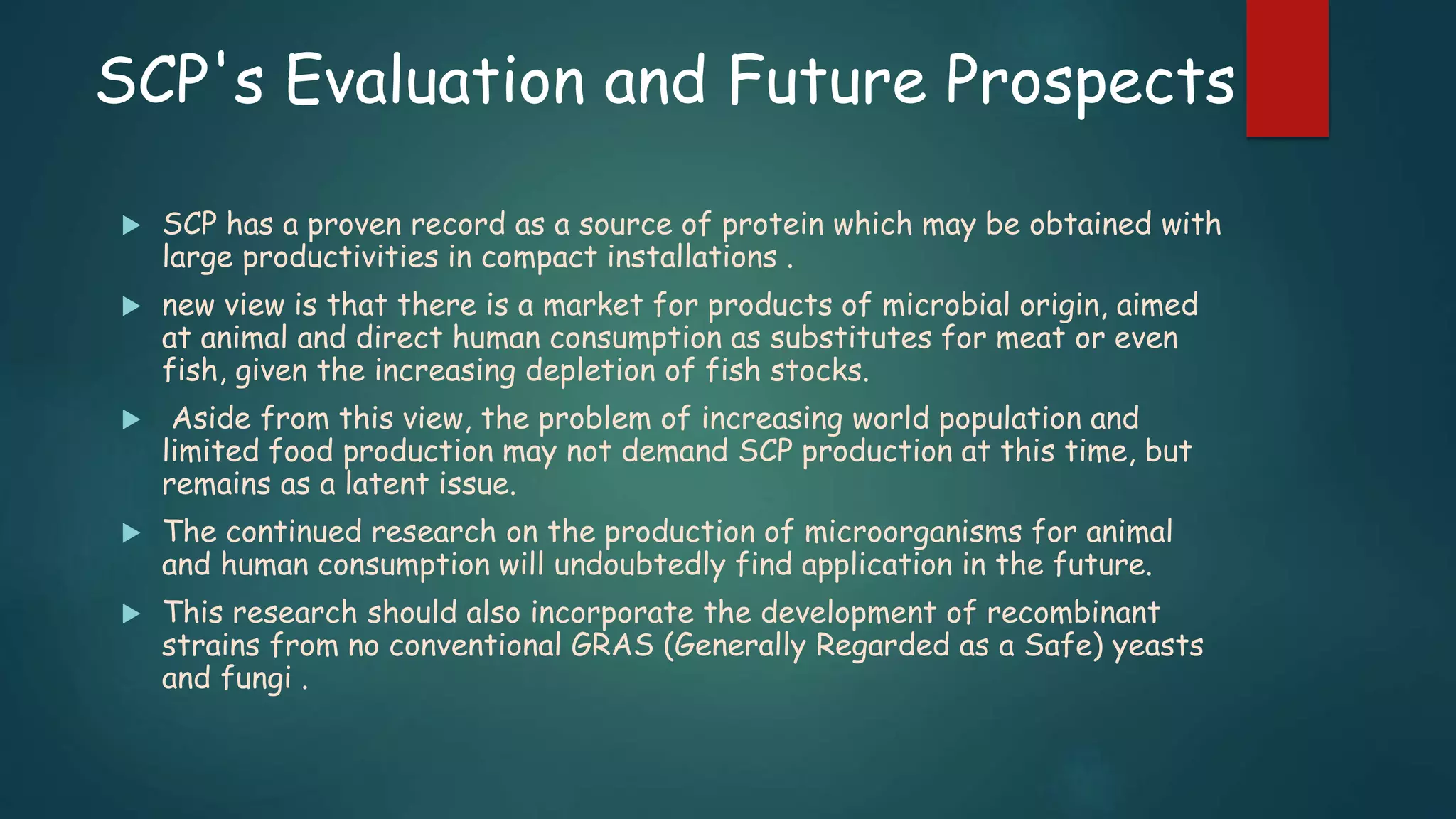Single cell protein (SCP) refers to the protein content of dead, dried microorganisms like yeast, fungi, bacteria and algae. These microorganisms are grown using various carbon sources and their protein is used as a supplement for animal feed and potentially human food. SCP is produced through fermentation processes using these microorganisms, with the protein then harvested, dried and processed. SCP provides an alternative protein source that can be produced sustainably using waste materials as feedstock. Key microorganisms used include yeast, fungi, algae and bacteria. While SCP shows promise as a sustainable protein source, further research is needed to optimize production methods and ensure safety for human consumption.

